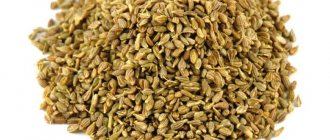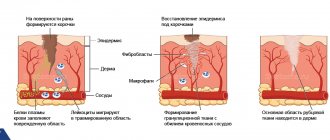Flux - what is it?
The medical name for the flux is periostitis. This is an inflammation of the periosteum in the jaw bone. The main reason for the development of the disease is an infection in the oral cavity. There can be several sources of infectious contamination:
- caries and carious cavities are a favorable environment for the proliferation of pathogenic microorganisms;
- mechanical damage to tissue, in which infection enters the cavity through an open wound;
- dental diseases caused by fungi and bacteria, such as stomatitis and candidiasis, can cause complications in the form of gumboil;
- poor oral hygiene leading to the development of pathogenic microflora;
- Chronic diseases of the throat, sinuses, and nasal mucosa are a source of constant inflammation and infectious diseases.
A distinctive sign of gumboil is swelling of the cheeks. But there are also earlier symptoms of the disease:
- pain when pressing on the gums and when chewing food;
- temperature;
- swelling of the mucous membranes;
- enlarged lymph nodes.
Read more about what flux is in a separate article.
Treatment of flux by a specialist consists of eliminating the source of infection. The doctor removes the tooth or pumps out pus from the periosteum, and then removes the cause of the disease: a carious cavity, fungus or tissue damage. Is it possible to replace treatment with a professional with self-therapy?
What can't you do?
It must be remembered that if pus enters the circulatory system, it can lead to damage to other organs. At the first signs, you should consult a doctor.
What not to do:
- The most common mistake is to apply a warm compress, which leads to even greater complications.
- Take antibiotics without first consulting your doctor.
- Before visiting a doctor, do not take painkillers. The doctor will not be able to make an accurate diagnosis.
- If the dentist made an incision to remove pus, then after this procedure it is not allowed to use Aspirin, this medicine will lead to bleeding.
- Seek help from a trainee or newcomer. Flux is a complex disease that only a specialist can help with.
Causes of flux:
- Caries is a tooth-destroying process in which bacteria enter the root of the tooth.
- Damage to the oral mucosa - a cut or blow can cause inflammation.
- Inflammation of the gum pocket – an infection can get between the tooth and the gum.
- Failure to comply with hygiene rules - after eating food, our mouth is a favorable environment for the growth of bacteria, which gradually destroy the protective layer of the tooth.
- The nerve was not completely removed - the dentist did not clean out the root canals and put a filling on top. After some time, the “dead” tooth begins to become inflamed.
Is it possible to treat flux at home?
Treatment of gumboil on the cheek at home is possible only at the initial stage, before pus has formed, since folk remedies can only cope with the infection - eliminate the source of infection and stop the development. The purulent form requires surgical intervention by a doctor; it is impossible to remove pus from the periosteum without a specialist, and it is impossible to eliminate the infection when it suppurates.
The most correct decision for the patient would be to consult a dentist and use folk remedies after consulting a doctor and in conjunction with prescribed drug therapy. However, if the patient categorically does not want to go to a specialist and decides to treat flux at home, he should follow some rules.
- Heat increases the spread of inflammatory processes, so you can’t warm up your cheek and gums!
- Any pressure on the source of inflammation can aggravate the condition of the periosteum and lead, for example, to suppuration, so you should not sleep or lie on your cheek with swelling!
- It is not recommended to take a hot shower or bath, eat hot food and drinks, or rinse your mouth with hot solutions.
- Individual intolerance to foods should be taken into account when preparing tinctures and decoctions.
Attention!
If pus, growths or other signs of deterioration appear, you should immediately consult a doctor.
Treatment of dental flux using traditional methods
To treat flux at home with folk remedies, products and herbs that have an anti-inflammatory and antiseptic effect are suitable. You can make medicinal compresses, decoctions and tinctures from them.
Compresses
For a therapeutic compress, you need to prepare cabbage, potato or beetroot juice, moisten a cotton pad in it and apply to the source of inflammation for 15 minutes.
To treat flux at home with soda and prepare a compress, you need to mix soda with water to a paste, put the mixture in clean gauze and apply to the sore spot for half an hour, then rinse your mouth with water.
Decoctions
Herbal decoctions not only have an anti-inflammatory effect, but also improve immunity. To prepare the solution, pour a few tablespoons of dry or fresh herbs with water and simmer over low heat for about 30 minutes, strain the finished mixture, cool and use for rinsing. The following herbs are suitable for medicinal decoctions:
- Linden;
- sage;
- elder;
- St. John's wort;
- oak bark;
- calendula.
Tinctures
Tinctures of flax seeds and propolis contain analgesic elements and help relieve pain. A cotton pad soaked in the tincture should be applied to the gum for 40 minutes. After the procedure, it is advisable not to eat food for an hour.
Rinse
To carry out the procedure, you can use both pharmaceutical preparations and natural remedies. All solutions at the initial stage of the disease have an anti-inflammatory effect and prevent the formation of a purulent mass.
If the abscess has been opened, the means used will stop the further spread of the disease and will help the patient recover faster after the operation.
Features of using various rinses at home:
- Baking soda - quickly relieves swelling, relieves pain for a long time, stops inflammation. To prepare the solution, 1 tsp. soda is dissolved in 250 ml of warm water. The mouth is rinsed daily every 1.5-2 hours until the manifestations of the disease subside.
- Baking soda with salt - have antibacterial, anti-inflammatory, anesthetic effects. Prepared: 1 tsp. each product is dissolved in 200 ml of water and used 6-8 times a day at regular intervals for 7-10 days.
- "Furacilin" is a potent antibacterial drug that can reduce pain, inflammation, and swelling. Dissolve 2 crushed tablets in a glass of hot water and, after cooling, rinse your mouth every 3 hours until the symptoms of the disease disappear.
- "Miramistin" - has an antiseptic, disinfectant effect, increases local immunity, prevents the spread of the disease, and accelerates the healing process. The drug is sold ready-to-use and does not require prior dilution. The procedure is carried out 2-3 times a day for 10-14 days (one procedure will require about 20 ml of the product).
- “Chlorhexidine 0.05% ” is a strong universal remedy that acts on all groups of pathogenic microflora, has wound healing and anti-inflammatory properties. It is recommended to use up to 4 times a day until the disease subsides.
- “Iodinol” contains iodine and has disinfecting, antiseptic, and anti-inflammatory effects. The instructions indicate that the drug (1 tbsp) must be diluted in 1 tbsp before use. water. The effectiveness of treatment with it is individual for everyone, but the result is visible already on the 4-6th day of use.
- "Hexoral" (0.1% alcohol solution) - has strong anti-inflammatory, antimicrobial, analgesic effects. Has a long-lasting effect (up to 12 hours), intended only for local use: 10-15 ml of undiluted product (1 tablespoon) rinse the mouth for 30 seconds. twice a day (in severe cases, more frequent use is allowed).
- “Malavit” (contains extracts of medicinal plants, silver and copper ions) - the drug blocks the action of pathogenic microflora, relieves pain, swelling, and inflammation. 10 drops The products are diluted in a glass of warm, but not boiled, water and used for rinsing up to 7 times during the day. When the disease subsides, the number of rinses can be reduced to 3.
- Sage and mustard herb - an infusion of these herbs relieves inflammation and has an antiseptic effect. Prepared: 2 tbsp. l. pour 1.5 tbsp of each plant. boiling water, leave for about 2 hours, then squeeze and strain. The product is used every 2 hours for a week.
- Sage – has strong antiseptic and anti-inflammatory properties. To make an infusion, you need 1 tbsp. l. crushed plant, pour 200 ml of boiling water, leave for 2 hours, strain and use to rinse your mouth every 2-3 hours for 7 days.
- Oak bark and St. John's wort - 2 tbsp. l. pour 1 liter of boiling water over each raw material, leave for 1.5 hours, strain and rinse up to 10 times a day during the entire course of therapy. The infusion will help reduce pain, contain the spread of the disease, and relieve swelling.
- Green tea and sage leaves - prepare an infusion of 1 tea bag (or 1 tsp) and 1 tsp. sage Pour raw materials 1.5 tbsp. hot water, leave for about half an hour, strain and use up to 6 times over 10 days (to enhance the effect, you can add 1 teaspoon of salt). The infusion will reduce inflammation, pain, and cope with bacteria.
- Propolis infusion – has regenerating, anti-inflammatory, antiseptic, antimicrobial, analgesic properties. The pharmaceutical preparation should be diluted with water in a ratio of 1:10 and the mouth should be rinsed with the resulting solution up to 8 times a day until complete healing.
- Alcohol infusion of calendula will help cope with swelling and inflammation. The infusion (1 tsp) is diluted in a glass of warm water and used at least 6 times a day.
- Aloe - all plant substances have analgesic, antibacterial, wound-healing effects. When treating gumboil, freshly squeezed juice from the leaves is mixed in equal volumes with warm boiled water and used for rinsing at intervals of 3 hours in the first 2 days. Starting from the third, the procedure is carried out three times a day.
To improve blood circulation in the gum tissue, all solutions must be warm before use.
All the recipes given are simple. Available means and medicinal herbs are used to prepare rinsing solutions using them.
You will learn why teeth react to hot and cold, and how to reduce this sensitivity. And here we have listed the symptoms of inflammation of the facial trigeminal nerve.
How to treat tooth flux with medications?
Treating flux at home with antibiotics is highly undesirable without a doctor’s prescription. Antibiotics are usually recommended in the early stages or after the pus has been removed. Medicines can reduce swelling and eliminate inflammation in a short time. The following drugs are suitable: Amoxiclav, Lincomycin, Biseptol.
A product for external use will help reduce swelling of soft tissues and speed up healing of the mucous membrane. Ointments for treating gum gum gums at home: Levomekol, Metrogyl denta.
Treatment of flux under the crown at home will not bring results, since to completely eliminate the infection it is necessary to remove the prosthesis and treat the tissue, and then install the crown again, without gaps between the material and the gum, which caused the infection. Only a specialist can remove and fix the prosthesis.
No. 2. Anti-inflammatory drugs for flux
In addition to antibiotics, you need to use products aimed at relieving inflammation, pain, swelling and temperature.
Nimesil
The best product among its analogues, it comes in powder form and works almost immediately. It has a pleasant minty taste, lowers fever and shows impressive analgesic properties.
Naklofen
Helps both quickly get rid of flux and relieve pain in the inflamed area. It is rarely used at home because it is administered by injection. There are many prohibitions on use that need to be studied.
Ibufen
Created on the basis of ibuprofen, it is sold in various forms. It is quickly absorbed by the walls of the gastrointestinal tract and quickly distributed throughout the body by the blood. Literally 30 minutes after administration, the temperature drops, and the first signs of improvement are visible.
Ketonal
A non-steroidal drug used in the treatment of gumboil. How to remove swelling, lower temperature and reduce pain - take Ketonal at home according to the recommendations (no more than 300 mg daily). You'll get in shape quickly.
Diazolin
In the shortest possible time, it eliminates swelling that affects the gums and soft tissues of the face. Thanks to its antiallergic and bactericidal properties, harmful microorganisms die, as a result of which the inflamed area stops festering.
Is it dangerous to treat flux at home?
Self-treatment of flux at home in adults and especially children does not guarantee a good result - the patient does not have sufficient knowledge and does not have tools at hand, such as an x-ray, to check the condition of the periosteum, but is guided only by his own sensations. But a decrease in swelling and a decrease in pain is not yet a sign of recovery.
The most harmless complication is the transition of periostitis to a chronic form, in which pain and swelling are not always present, but only during the period of exacerbation. Unfavorable outcomes include:
- osteomyelitis - an inflammatory process that affects the entire skeletal system;
- abscess and phlegmon - the spread of purulent inflammation in cells, muscles and bones.
As described earlier, self-medication is acceptable in the early stages. In case of purulent formations, it is better to consult a doctor, since the pus must be promptly removed by a specialist. With home treatment, pus accumulates and can break out at any time. The entry of pus into the bloodstream is very dangerous - contaminated blood will spread the infection throughout the body. In most cases, blood poisoning from a purulent formation (sepsis) leads to death.
Antibiotics for flux
Antibacterial therapy is mandatory, since it is impossible to cure flux on the gums without them using traditional methods alone. Therapy involves the use of agents that affect gram-positive and anaerobic bacteria. The course of antibiotic treatment for flux is 10 days. Most often, dentists prescribe Metronidazole with Lincomycin or Clindamycin. In dentistry, preference is given to the latter drug.
General-spectrum drugs are also used for treatment:
- Sumamed;
- Amoxiclav;
- Unidox Solutab;
- Flemoxin;
- Digital
In case of diabetes mellitus and lack of therapeutic effect due to changes in the sensitivity of microflora, drugs based on Norfloxacin or Ofloxacin are indicated. It is difficult to cure gumboil in such conditions. The main representatives of the funds are:
- Syphlox;
- Tarivid;
- Nomitsin.
Is it necessary to visit the dentist?
Why treat flux if over time the lesion will open on its own, and antibacterial therapy will help eliminate purulent formations? This is often the opinion of uninformed patients. In fact, failure to treat flux at the dentist leads to dire consequences:
- Abscess. It is a limited purulent inflammation. Occurs with prolonged flux and lack of treatment.
- Phlegmon. It is a diffuse inflammation of soft tissues with the formation of pus. Swelling and pain increase. Cellulitis forms after the rupture of a purulent sac during periostitis.
- Osteomyelitis of the jaw. This is a purulent-necrotic lesion of bone tissue. With a long course of flux, the pathological focus spreads to all neighboring areas. Osteomyelitis is often complicated by sepsis, leading to death.
- Inflammation of the maxillary sinuses. Pus spreads quickly through the airways. The maxillary sinuses are affected when the flux is localized on the upper jaw, from the canine to the first molar.
Prevention
It is easier and safer not to treat the disease, rather than to allow it to develop. By following simple recommendations, you will protect yourself from flux.
- Oral care. Daily hygiene procedures should include not only brushing your teeth, but also using dental floss, irrigator and mouthwash.
- Preventive examinations. Visiting the dentist every six months and timely treatment of caries, stomatitis and other diseases will help prevent the development of periostitis. See the list of verified clinics in Moscow here.
- Attention to detail. Plaque on the tongue, thickening of the folds of the mucous membrane, loose gums are signs of infection, which can cause gumboil.
- Nutrition. Sweets, baked goods, and carbonated water can lead to the development of tooth decay, while fresh vegetables, fruits and meat strengthen gums and teeth.
As we found out, self-medication for flux may not bring results and even worsen the situation. If you don’t know how to relieve swelling and what to do if flux has formed, do not look for traditional methods on the Internet - consult a doctor. He will quickly and painlessly remove the pus and prescribe medications that are suitable specifically for your body. Traditional methods will complement drug therapy well and speed up healing, but will not replace dental intervention. With adequate and timely treatment, the flux goes away quickly and without complications. Do not self-medicate, do not put your health at risk!
What is tooth flux and what are its symptoms?
Flux is an inflammatory process in the periosteum of the jaw, accompanied by the formation of an abscess with a localized accumulation of pus. More often, an adult suffers from the disease, because with age, problems with the condition of the teeth may appear. But sometimes flux can also occur in children . Regardless of age, the clinical picture will be the same for everyone.
Flux is accompanied by swelling on the cheek. The area near the source of infection may swell. Depending on the location, the nasolabial fold, eye, and chin can also swell. Severe throbbing pain radiating to the temples and eyes is the second obligatory companion of acute inflammation. These are the most common symptoms of incipient periostitis. Other common signs that accompany the disease:
- malaise, weakness;
- temperature rise to 38 degrees;
- headache;
- swelling of the affected and surrounding areas;
- redness of the oral mucosa;
- enlarged lymph nodes in the area of inflammation.
Another early symptom that accompanies dental flux is pain when pressed. When chewing, exactly that area will hurt, in the area of which a swollen, compacted ball with pus can then come out. In photos and videos on the Internet you can see what tooth flux is and its visible, visual signs that cannot be confused with other oral diseases.











